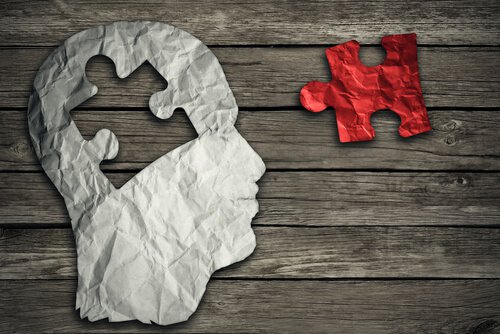How Does Exercise Affect Our Brain?

Exercise is very beneficial for our health. After all, it helps us stay in shape, it protects us from many diseases, and it even improves our immune system, among other benefits. Thus, exercise is one of our best allies for leading a healthy lifestyle and for our body to function better.
Your brain is one of the areas that benefits greatly from exercise. Actually, there have been many studies that support this. In this article, we’ll take a look at some of their findings regarding the positive influence of exercise on various cognitive processes.
1. Regular aerobic exercise improves your attention
A group of research from the University of Granada, led by Luque-Casado, compared two groups of young adults. One of the groups had a very active lifestyle, while the other had a sedentary lifestyle. They observed both groups perform a cognitive task for 60 minutes.
The participant’s electrophysiological activity was recorded. The researchers observed that those with a high level of physical fitness maintained a greater amplitude and P3 potential compared to the participants with a sedentary lifestyle. This is associated with our ability to efficiently focus our attention on a task.
Attention is a high-level cognitive function that relates to all cognitive processes. These findings suggest that the subjects who exercise regularly exhibit more efficient bi-directional functioning between their central and autonomic nervous system (that is, between the brain and heart).
2. It helps recover cognitive functions after a stroke
A systematic review published in the Journal of Neurology looked at the relationship between physical exercise and the recovery of cognitive functions damaged after a stroke. Strength training improved overall cognitive functioning.
Thus, physical activity is not only a promising therapy not just for the motor functions of those who have suffered from a stroke. In addition, the benefits also extend to a cognitive level.

3. It helps prevent dementia
Researcher Franco-Martinez conducted another systemic review that focused on the influence of physical activity on the cognitive function of elderly subjects who were both healthy and suffered from cognitive impairment. Overall, this study found that a higher rate of physical activity corresponded with lower deterioration in both groups.
Physical exercise is a promising psychosocial strategy for older adults with or without preexisting cognitive impairment. In support of these results, a study in BMC Psychiatry found that can be a way to protect against cognitive impairment. In some cases, it provided even better results than concrete intervention.
These findings suggest that the effects of having an active lifestyle may differ depending on the frequency, variety, and enjoyment of the activity as well as the participant’s intrinsic motivation. No matter what, exercise positively influences cognitive functioning, vascular health, and brain metabolism.
4. You can fight migraines and tension headaches with exercise
A study published by Gil-Martinez in the Revista de Neurologia reviewed all of the previous studies focused on fighting migraines and headaches with physical activity. Overall, they concluded that therapeutic exercise decreases the intensity and frequency of pain.
The qualitative analysis provides strong evidence regarding the absence of adverse effects after therapeutic exercise. Plus, the lack of side affects may provide advantages over some drugs.
In addition, the effectiveness of physical therapy treatment – including therapeutic exercise – was proven to decrease the intensity, frequency and duration of pain for tension headaches.
5. It helps us to memorize better
At the University of Radboud’s Donders Institute, they carried out a study to discover the effects of exercise after memorizing certain information. To do this, 72 subjects participated in the study. They studied the position of 90 drawings for 40 minutes and then assigned the participants to three different groups.
In the first group, the subjects exercised just after completing the memory task. Then, in the second group, they exercised for hours later. In the third group, they didn’t perform any physical activity. The subjects returned 48 hours later. Then, they took a test to determine what they had remembered from the memory task while they were observed using an MRI.

The results indicated that the subjects in the group who had exercised 4 hours after the memory task retained the information better than the other two groups. Magnetic resonances also showed more precise relations in the hippocampus – the area of the brain related to memory and learning – whenever the subject responded correctly.
Before you go, read about How to Improve Your Memory
Exercise is very beneficial for our health. After all, it helps us stay in shape, it protects us from many diseases, and it even improves our immune system, among other benefits. Thus, exercise is one of our best allies for leading a healthy lifestyle and for our body to function better.
Your brain is one of the areas that benefits greatly from exercise. Actually, there have been many studies that support this. In this article, we’ll take a look at some of their findings regarding the positive influence of exercise on various cognitive processes.
1. Regular aerobic exercise improves your attention
A group of research from the University of Granada, led by Luque-Casado, compared two groups of young adults. One of the groups had a very active lifestyle, while the other had a sedentary lifestyle. They observed both groups perform a cognitive task for 60 minutes.
The participant’s electrophysiological activity was recorded. The researchers observed that those with a high level of physical fitness maintained a greater amplitude and P3 potential compared to the participants with a sedentary lifestyle. This is associated with our ability to efficiently focus our attention on a task.
Attention is a high-level cognitive function that relates to all cognitive processes. These findings suggest that the subjects who exercise regularly exhibit more efficient bi-directional functioning between their central and autonomic nervous system (that is, between the brain and heart).
2. It helps recover cognitive functions after a stroke
A systematic review published in the Journal of Neurology looked at the relationship between physical exercise and the recovery of cognitive functions damaged after a stroke. Strength training improved overall cognitive functioning.
Thus, physical activity is not only a promising therapy not just for the motor functions of those who have suffered from a stroke. In addition, the benefits also extend to a cognitive level.

3. It helps prevent dementia
Researcher Franco-Martinez conducted another systemic review that focused on the influence of physical activity on the cognitive function of elderly subjects who were both healthy and suffered from cognitive impairment. Overall, this study found that a higher rate of physical activity corresponded with lower deterioration in both groups.
Physical exercise is a promising psychosocial strategy for older adults with or without preexisting cognitive impairment. In support of these results, a study in BMC Psychiatry found that can be a way to protect against cognitive impairment. In some cases, it provided even better results than concrete intervention.
These findings suggest that the effects of having an active lifestyle may differ depending on the frequency, variety, and enjoyment of the activity as well as the participant’s intrinsic motivation. No matter what, exercise positively influences cognitive functioning, vascular health, and brain metabolism.
4. You can fight migraines and tension headaches with exercise
A study published by Gil-Martinez in the Revista de Neurologia reviewed all of the previous studies focused on fighting migraines and headaches with physical activity. Overall, they concluded that therapeutic exercise decreases the intensity and frequency of pain.
The qualitative analysis provides strong evidence regarding the absence of adverse effects after therapeutic exercise. Plus, the lack of side affects may provide advantages over some drugs.
In addition, the effectiveness of physical therapy treatment – including therapeutic exercise – was proven to decrease the intensity, frequency and duration of pain for tension headaches.
5. It helps us to memorize better
At the University of Radboud’s Donders Institute, they carried out a study to discover the effects of exercise after memorizing certain information. To do this, 72 subjects participated in the study. They studied the position of 90 drawings for 40 minutes and then assigned the participants to three different groups.
In the first group, the subjects exercised just after completing the memory task. Then, in the second group, they exercised for hours later. In the third group, they didn’t perform any physical activity. The subjects returned 48 hours later. Then, they took a test to determine what they had remembered from the memory task while they were observed using an MRI.

The results indicated that the subjects in the group who had exercised 4 hours after the memory task retained the information better than the other two groups. Magnetic resonances also showed more precise relations in the hippocampus – the area of the brain related to memory and learning – whenever the subject responded correctly.
Before you go, read about How to Improve Your Memory
This text is provided for informational purposes only and does not replace consultation with a professional. If in doubt, consult your specialist.







